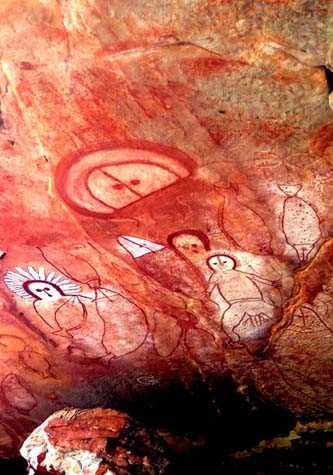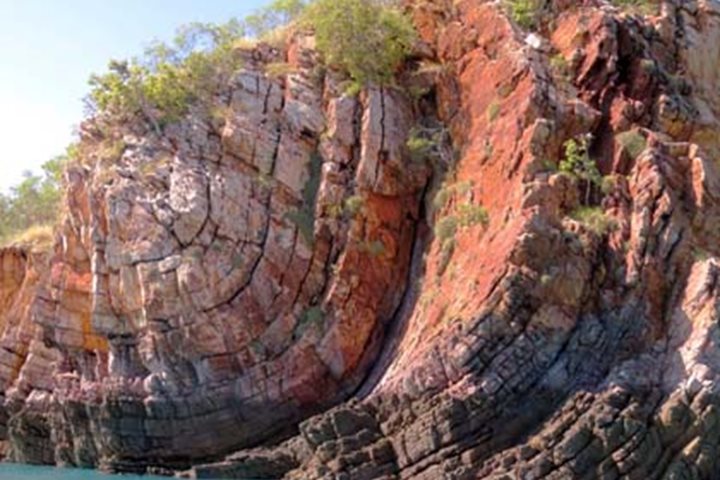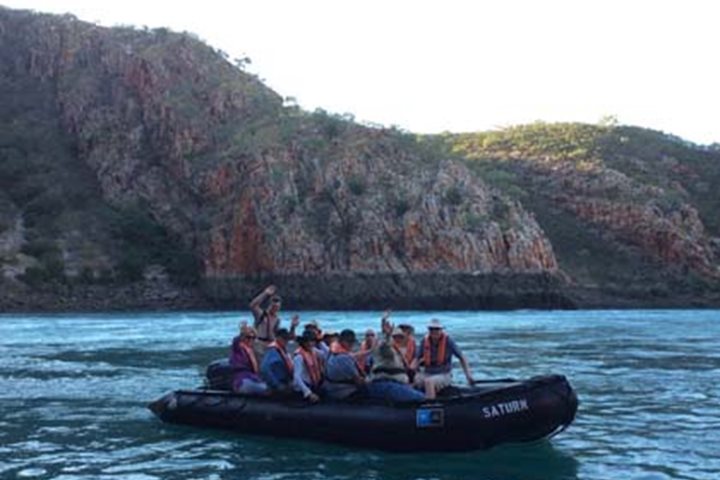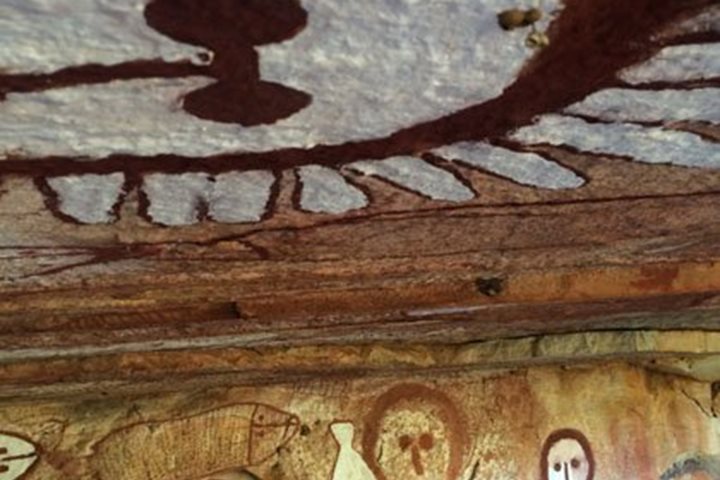A new adventure is always welcomed by those who have the explorer within. As dawn broke, another stunning morning was contemplated by the spirited guests heading to a site never before explored by the National Geographic Orion expedition team. Taking advantage of the neap tides and with cameras in hand, we boarded our Zodiacs and headed to one of the main Montgomery Reef islands. Covered in mangrove vegetation and casuarina forests, this small island is completely surrounded by coral reefs. The importance of this unique ecosystem is unmistakable, as it is located in the largest inshore reef system in Australia. The vast area (400km sq.) of shallow, sheltered and sunlit lagoon and pools of the reef platform supports a great diversity, and is home to a vast array of marine life including dugongs, reef sharks, rays, birds and an extremely large population of turtles who feed on the seagrass beds.
After a delicious breakfast, it was time to discover the “river” or main channel, with its cascading and flowing waters. Many green turtles and birds were sighted but the highlight was a joyful surprise strategically prepared by our amazing hotel team, with drinks and canapés served on an exposed sandbar, adding a refreshing taste to our adventures. After a tasty lunch savored on board, we headed to Raft Point, a place characterized by impressive geological cliff formations cliffs of pink and orange sandstone plunging into the sea of Collier Bay. This is where we had the opportunity to observe the mysterious and intriguing sacred Wandjina rock art. Wandjinas are the mystic ancestors of the Worrora and related to Kimberley Aboriginal people, including the Ngarinyin and the Wunambal tribes.
Wandjinas are considered to be the creators of human descendants, the land and laws, and are believed to still exert their powers. Represented by figures displaying large haloed heads with no mouths, Wandjinas are painted on sandstone surfaces, usually facing west, or on the walls or ceilings of caves and shelters. Ochres in various colors of reds, browns, yellows, whites and blacks can be utilized as pigments. Most Wandjina paintings were done when ceremonies were taking place at a particular site. Only men who were the dedicated painters within the tribe took part in the painting. The oldest Wandjina site may be up to 6,000 years old and have been retouched and painted many times. The Wandjinas are intrinsically linked to the mythological life, social organization and seasonal movements of Indigenous Kimberley people. During our ascent to the natural art gallery, we were greeted by the iconic symbol of The Kimberley, the Boabs trees (Adansonia gregorii). These trees are related to the Madagascan and African Adansonia species known as Baobabs. Though not exceptionally high (up to 15 m), they can reach a massive girth of up to 20 meters. Standing tall as sentinels along the path, some of the specimens are considered to be almost 1,000 years old. This is The Kimberley, a place of magnificence that will touch your spirit, and each day will take you into a new exhilarating adventure.







